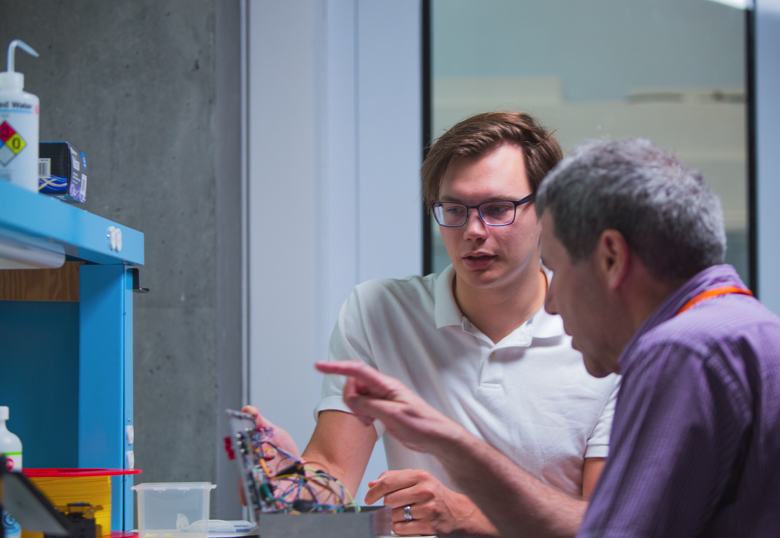An innovative concept developed by the University of Lethbridge’s Astronomical Instrumentation Group (AIG) was recently published in the prestigious Review of Scientific Instruments, a peer-reviewed scientific journal published by the American Institute of Physics (AIP) now in its 90th year. Although published by the AIP, the Review of Scientific Instruments is unique in that it reports on novel instrumentation from all branches of science and, as a result, has a high acceptance threshold.
The paper, titled An angle-scanned cryogenic Fabry-Pérot interferometer for far-infrared astronomy, by Dr. Ian Veenendaal (BSc ’13, MSc ’16, PhD ’20) et al, presents a novel design for a Fabry-Pérot Interferometer (FPI). An FPI is a spectrometer that is able to obtain high-resolution spectral images of distant astronomical sources, allowing astrophysicists to look back in time to study the formation and evolution of galaxies.

“Being published in the Review of Scientific Instruments speaks to the quality of Ian’s work in his doctoral thesis,” says Dr. David Naylor, Veenendaal’s supervisor and Tier 1 Board of Governors’ Research Chair in the Department of Physics & Astronomy. “This paper has already captured the interest of teams at the French national centre for scientific research and the Scripps Institute, demonstrating the broad potential of this new concept.”
Reviewers of the article highlighted the novelty of the instrument, which was tested in the AIG’s test facility cryostat to simulate the hostile environment that would be encountered in space.
Veenendaal developed his design with the Space Infrared Telescope for Cosmology and Astrophysics (SPICA) mission in mind. The telescope is a collaboration between the European Space Agency (ESA) and the Japan Aerospace Exploration Agency (JAXA). SPICA is one of three candidates for ESA’s mission, with the final selection expected in 2021.
“Developing novel instrumentation is what we do in the AIG,” says Naylor. “There are numerous subject-specific instrumentation journals, but to be recommended as a feature article in the Review of Scientific Instruments speaks not only to the quality, but also to the breadth of interest in our work.”
Indeed, Veenendaal was offered a position in the Netherlands Institute for Space Research (SRON) a full year before he defended his thesis in recognition of his thesis work. He joined SRON in September 2019 and is currently leading the design of the Assembly Integration and Verification (AIV) effort for the SAFARI instrument on the SPICA mission.
“The experience I’ve gained from my PhD research has proven to be invaluable for my current position at SRON,” says Veenendaal. “The AIV of SAFARI involves a complex interplay of mechanical, electrical, optical, thermal and even logistical systems.”
